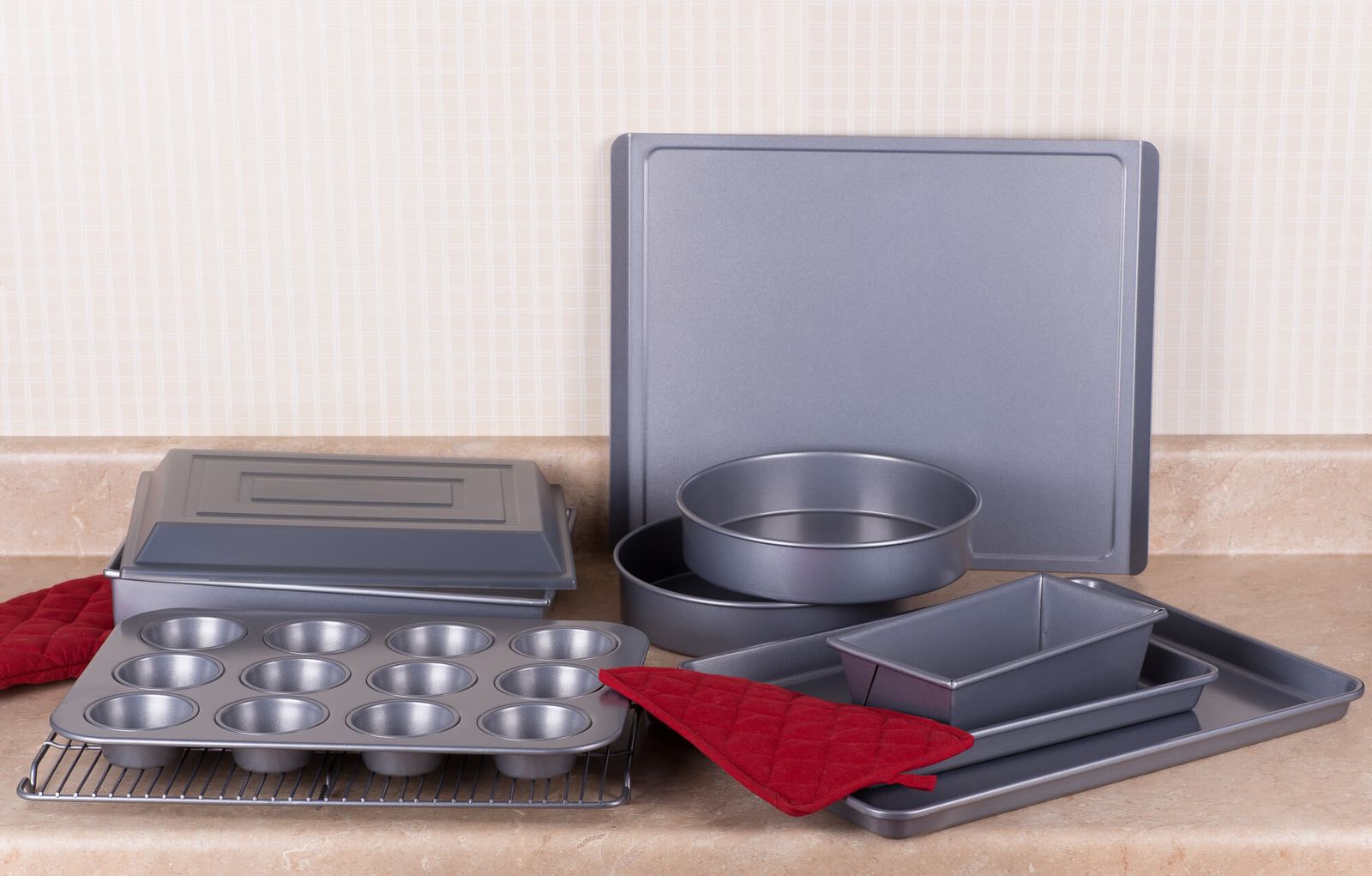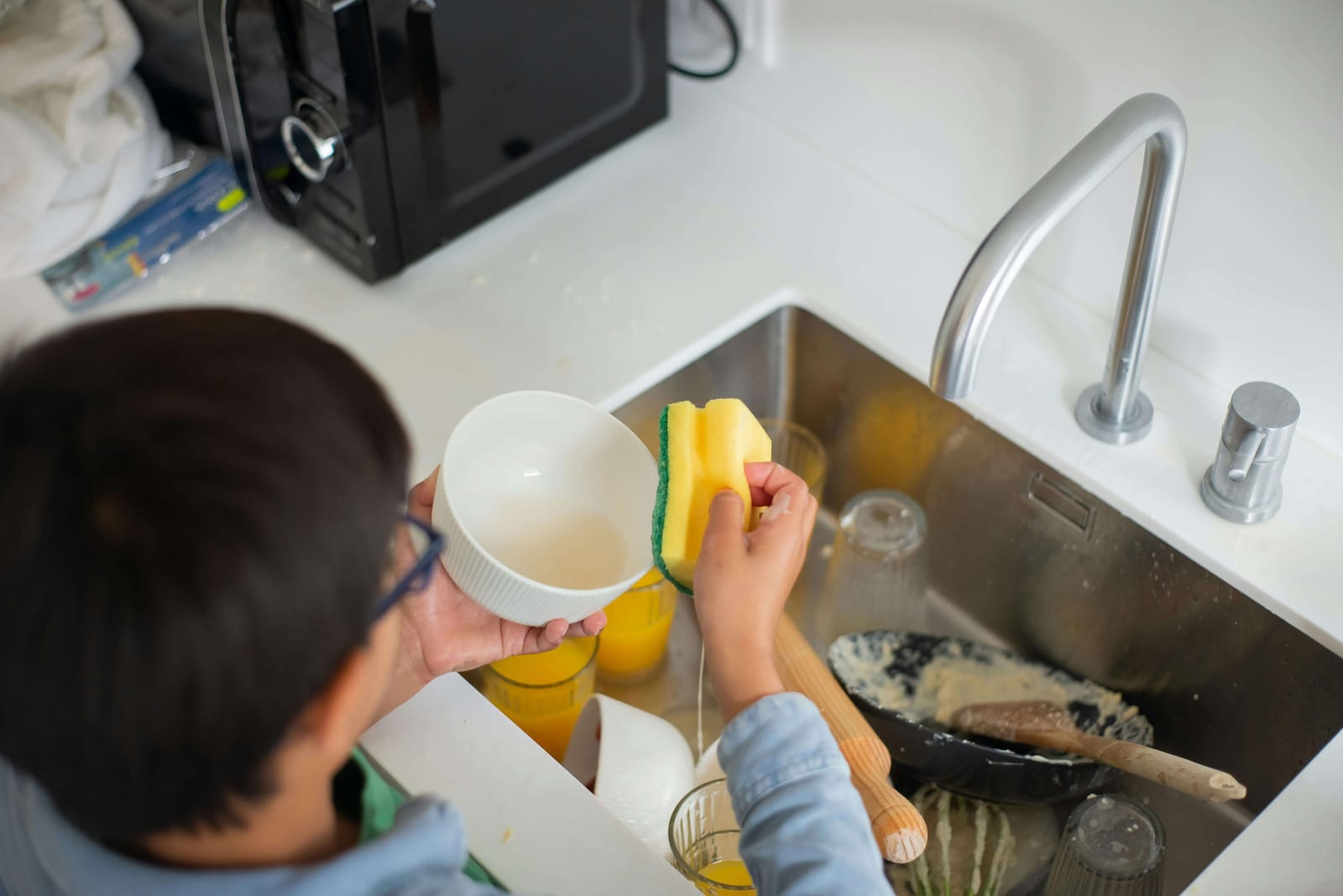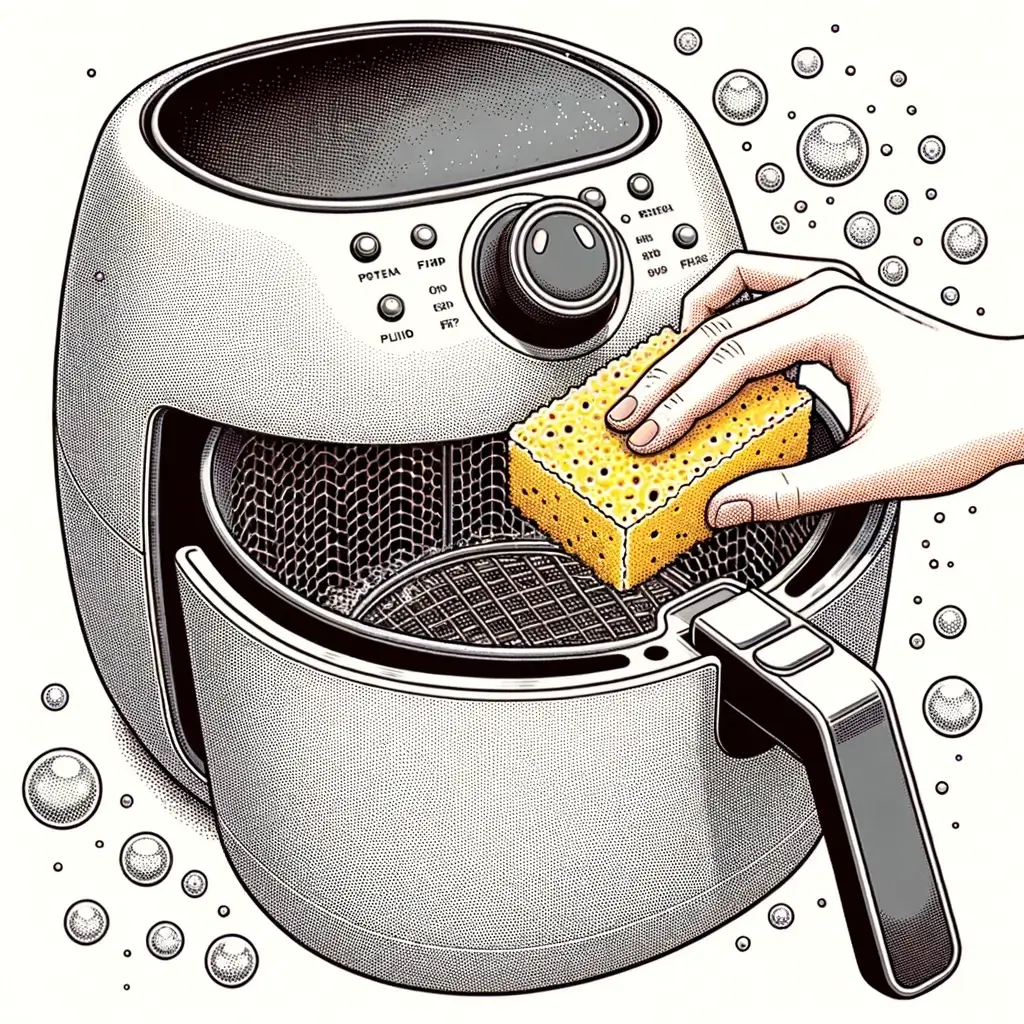Welcome to the non-stick revolution!
In this micro-post, we will delve into the science behind non-stick bakeware sets, discussing the materials used, the process of how they become non-stick, and the benefits and potential drawbacks of using non-stick bakeware.
In This Article
- The Science Behind Non-Stick Coatings
- The Evolution of Non-Stick Technology
- The Benefits of Non-Stick Bakeware
- The Drawbacks of Non-Stick Bakeware
- Non-Stick Bakeware vs. Regular Bakeware
- Care and Maintenance Tips for Non-Stick Bakeware
- Conclusion
- Frequently Asked Questions
- Further Reading
The Science Behind Non-Stick Coatings
The non-stick revolution in bakeware sets owes its success to a compound known as Polytetrafluoroethylene (PTFE), more commonly known as Teflon. This compound, invented by Roy Plunkett in 1938 while working for DuPont, has the lowest coefficient of friction of any substance, making it the perfect material for non-stick applications.
PTFE is a polymer composed of carbon and fluorine atoms. The strong bonds between these atoms create a stable and durable structure that is resistant to heat and virtually immune to chemical reactions. This means that when you're baking your favorite pies or cookies, the food doesn't stick to the pan, and the pan doesn't react with the food.
The Evolution of Non-Stick Technology
Non-stick technology has come a long way since the invention of Teflon. Today, we have a variety of non-stick coatings to choose from, including anodized aluminum, ceramic, and other materials. These advancements in non-stick technology have been driven by a desire for safer, more environmentally friendly options.
For instance, the processing of PTFE used to include the use of PFOA, a substance that has been phased out due to environmental and health concerns. In response to this, ceramic coatings have emerged as a popular alternative. These coatings offer a non-stick surface without the use of PFAS, making them a greener choice for the eco-conscious consumer.
The Benefits of Non-Stick Bakeware
Non-stick bakeware offers several advantages over traditional bakeware. These include:
- Easy food release: The main advantage of non-stick bakeware is that food easily releases from the surface, reducing the need for excess oil or butter.
- Easy to clean: Non-stick bakeware is typically easier to clean than traditional bakeware, as food does not stick to the surface.
- Even heat distribution: Many non-stick bakeware sets are designed to distribute heat evenly, resulting in more consistent baking results.
The Drawbacks of Non-Stick Bakeware
Despite their benefits, non-stick bakeware sets also have some potential drawbacks:
- Durability: While modern non-stick bakeware is more durable than older versions, it can still be prone to scratches and wear over time.
- Temperature limitations: Non-stick bakeware cannot withstand extremely high temperatures, as this can cause the non-stick coating to break down and release fumes.
- Health concerns: There have been some health concerns associated with the use of PTFE, although most experts agree that non-stick bakeware is safe to use if used properly.
Non-Stick Bakeware vs. Regular Bakeware
When it comes to baking, the type of bakeware you use can significantly impact the outcome of your culinary creations. Both non-stick and regular bakeware have their unique advantages and are suited for different types of recipes.
Non-Stick Bakeware
Non-stick bakeware is coated with a material that prevents food from sticking to its surface. This feature is particularly beneficial for recipes that require easy food release, such as:
- Cakes: Non-stick bakeware allows cakes to slide out of the pan effortlessly, maintaining their shape and texture.
- Muffins: Muffins can be tricky to remove from their tins, but non-stick bakeware makes this task a breeze.
- Cookies: Non-stick cookie sheets ensure your cookies don't stick to the pan, resulting in perfectly shaped cookies every time.
However, non-stick bakeware isn't suitable for all types of baking. The coating can degrade at high temperatures, potentially releasing harmful fumes. Therefore, non-stick bakeware isn't recommended for recipes that require high heat.
Regular Bakeware
On the other hand, regular bakeware is typically made of metal, glass, or ceramic and doesn't have a non-stick coating. This type of bakeware is ideal for recipes that require high heat, such as:
- Bread: Regular bakeware is excellent for baking bread as it can withstand the high temperatures required for bread to rise and brown properly.
- Pizza: Regular bakeware can handle the high heat needed to achieve a crispy pizza crust.
Care and Maintenance Tips for Non-Stick Bakeware
Proper care and maintenance can extend the life of your non-stick bakeware. Here are some tips:
- Avoid overheating: Overheating can damage the non-stick coating and cause it to lose its non-stick properties. Always use low to medium heat with non-stick bakeware.
- Use the right utensils: Avoid using metal utensils that can scratch the non-stick surface. Instead, opt for wooden, silicone, or plastic utensils.
- Clean properly: Clean your non-stick bakeware with warm, soapy water after each use. Avoid using abrasive cleaners or scouring pads that can scratch the surface.
- Store carefully: When storing your non-stick bakeware, avoid stacking them directly on top of each other, as this can cause scratches. If space is an issue, place a soft cloth or paper towel between each piece.
Conclusion
The world of non-stick bakeware is a fascinating blend of science and practicality. Understanding the role of PTFE and the evolution of non-stick technology can help you appreciate the convenience these bakeware sets bring to your kitchen.
While they have their benefits, it's also important to be aware of their drawbacks and use them responsibly.
With proper care and maintenance, your non-stick bakeware can serve you well for many years, making your baking endeavors more enjoyable and less of a chore.
Happy baking!
Frequently Asked Questions
What is the science behind non-stick pans?
Non-stick pans are coated with a polymer called polytetrafluoroethylene (PTFE), which has a high melting point and is extremely slippery, making it an ideal coating for bakeware.
Why do chefs not use non-stick pans?
Some chefs prefer not to use non-stick pans because they can't withstand extremely high temperatures and can wear over time. However, many chefs do use non-stick pans for certain dishes.
Why is Teflon still legal?
Teflon is still legal because it is considered safe for use in cookware when used properly. The main concern with Teflon is the potential release of toxic fumes if the pan is overheated, but this is unlikely to occur under normal cooking conditions.
How long does non-stick bakeware last?
The lifespan of non-stick bakeware depends on how it is used and cared for. With proper use and care, non-stick bakeware can last for several years.
Further Reading
- Decoding Bakeware Sets: A Micro-Guide to Components - Dive deep into the components of a bakeware set and learn about their uses and maintenance.
- Tailoring Your Kitchen: Selecting the Ideal Bakeware Set - Find out how to select a bakeware set that complements your cooking style and kitchen space.
- Looking for a more versatile and convenient way to bake? Explore the comprehensive insights shared in the article 'The Advantages of Cooking With Silicone Bakeware' on Delishably, shedding light on the advantages of opting for silicone bakeware.
- If you're considering upgrading your kitchen tools and are on the hunt for a new bakeware set, be sure to check out our comprehensive guide on the best bakeware sets. It's packed with useful information to help you make the best choice for your baking needs.



